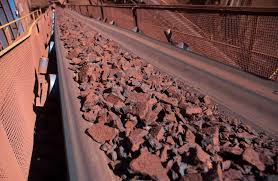Iron ore’s surge, with its latest jump to three-digits, is set to persist in the short term powered by supply concerns, before a market surplus in the second half spells a decline for the steelmaking material.
Physical spot ore surged to $101.05 a ton on Friday, the highest since August, according to Mysteel Global. Elevated steel output in China and concerns about Brazilian supply as the country faces a rapidly spreading coronavirus outbreak has fueled prices. Futures in Singapore on Monday edged closer to $100.
“It’s hard to argue that iron ore prices won’t hold on to these recent gains in the short‑term,” Commonwealth Bank of Australia Vivek Dhar said. There are “growing concerns that it was a matter of time before Brazil’s iron ore output is disrupted,” while in China, the near-term indicators for iron ore demand are very positive.
Iron ore surged more than 20% last month as Brazil becomes the world’s second most-infected nation, driving concerns about the impact on miner Vale SA. The company has already cut output guidance this year on bad weather and the virus impact. Brazil accounts for about 23% of global seaborne supply, and exports so far this year are already more than 16% lower than in 2019.
Meanwhile, China mills are showing healthy demand for iron ore. Port stockpiles have declined for the 7th straight week to the lowest since 2016, and steel production is up 1% so far this year compared with 2019.
“Although the strength of the stimulus during the ‘two sessions’ fell just short of expectations, it still injected trillions of yuan into the economy,” Kallanish Commodities Ltd.’s Tomas Gutierrez said, referring to China’s National People’s Congress. “That’s been enough to keep Chinese steel output near record levels.”
For miners, iron ore’s surge will drive “many more ‘begrudging’ upgrades,” said Shaw & Partners Ltd. analyst Peter O’ Connor. Shares of Australia’s BHP Group, Rio Tinto Group and Fortescue Metals Group Ltd. gained on Monday, with Fortescue up about 38% this year.
2H Decline
Come the second-half of this year, prices are widely expected to decline. Bloomberg Intelligence expects the market to flip from a deficit to a 34-million-ton surplus in the second half on higher shipments and stagnating demand. While Citigroup Inc. raised its third-quarter forecast to $85, it maintains a bearish view and sees prices at $70 by the end of the year.
“We are confident that China’s demand impulse will fade,” said CBA’s Dhar, adding that stimulus measures such as bond quotas for infrastructure projects are being used up. “Concerns over Brazil’s seaborne supply will also fade over the year as the country eventually contains its Covid‑19 outbreak.” The bank forecasts iron ore at $70 a ton by the end of the year, although there may be upside risks from Brazil exports.
“The big question in 2H is whether demand for Chinese steel both domestically, and more importantly, for export, can keep pace,” said Andrew Glass, founder at Avatar Commodities Ltd. and a former executive at Anglo American Plc. China’s steel exports have declined on-year amid the pandemic, with the country’s industry group warning of a significant drop this quarter.
(Source Bloomberg)
